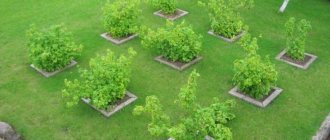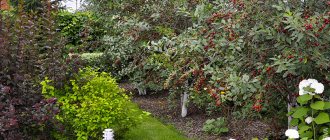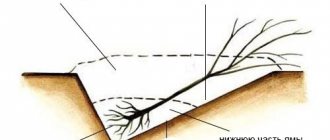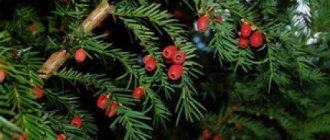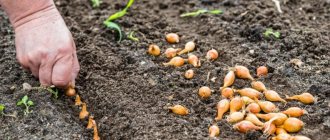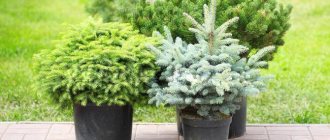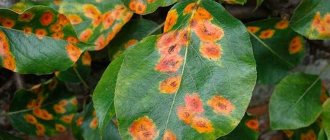There are many negative aspects that a summer resident has to face. Either the land is not fertile and the plants do not want to grow, then the summer drought destroys the entire harvest, or pests and diseases give no rest.
Some people have a steep slope and it takes a lot of time and effort to turn it into a comfortable and beautiful place. An equally important problem is flooding.
Only by taking measures aimed at draining the summer cottage can you get rid of this trouble. Today we will look at what needs to be done to do this in order to forget about excess hydration for a long time.
Why do you need an oak tree?
Let's start with a classic case. Moscow once suffered from floods every year. It was decided to plant an array of spruce forests in the areas west of the city, where the watershed sources are located. The trees took ten years to plant.
EVERYTHING YOU NEED FOR THIS ARTICLE IS HERE >>>
As a result, the floods decreased significantly - the spruce forest retained a significant amount of water.
Pump trees
Yes, you can make your plot drier by planting hygrophyte trees that prefer highly moist soils. It is advisable to place spruce, floodplain oak along the perimeter of the site, and willow along the perimeter of the drainage channels. And they will suck water from the nearest territory around the clock.
Ornamental shrubs for wet areas
The most popular types of “water-resistant” shrubs include: white dogwood (Cornus alba), shoot dogwood (Cornus stolonifera), Douglas spirea (Spiraea douglasii), as well as common or red viburnum (Viburnum opulus).
In the garden, all these shrubs are beautiful plants of the so-called “background”. They perform their “defensive” functions clearly, forming a hedge and being a natural barrier from the wind or prying eyes. Separately growing turf and viburnum are used for decorative purposes - they will not only withstand gushing streams of water in the spring, but will also decorate the garden with their brightly colored shoots and bunches of berries in the summer.
When laying out a garden on heavy, wet soils, you should remember that with the growth and development of plants, the water balance of the area changes. The water and nutrient requirements of mature trees and shrubs are constantly increasing, which means water consumption is also increasing. Therefore, over time, the process of selecting plants for a wet area will become more flexible. And in addition to the resistant and “waterproof” ones, you can grow any other bushes and trees that you like.
Where does the water come from?
But it's not that simple. First of all, it is necessary to understand from which side the water comes, that is, to find the direction of the drainage basin. For example, a plant such as marsh rush will tell you - it grows on swampy soil. On the side where there is more of it, water is more likely to flow.
But it is better to trust the opinion of experts.
Next, if possible, plant pump trees along the edge of the catchment area. This is where the whole world needs to unite; this work cannot be done alone.
If you are active, you can make the existing government program “Plant Your Tree” work for you and increase the landscaping of the village with oaks, spruces and willows.
What trees will help drain a waterlogged area of land?
The point is that the geese have a range.
A kind of area fenced off from the rest of the site, where they go from their foam block plastered house. In the summer, when it rains, this area easily turns almost into a swamp; it got to the point where you could get stuck almost knee-deep in the center. I’m solving this issue for now by dumping soil, mostly sand, and occasionally the remains of gravel. In fact, you can pour a whole KamAZ truck of sand in there almost every year and then everything is great again. In terms of money, this, of course, is not cheap, and I limit myself to just adding wheelbarrows of sand along the edges of this swamp along the aisles so that the geese can walk around and at least not get so dirty.
Last year, I got involved in breaking down the ancient concrete driveway of one of the neighbors, which, in addition, was done haphazardly, well, in general, the neighbor remade everything to zero (the new owner of the site), and I took out a decent amount of old dirty sand in half with pebbles, small fragments of paving slabs, clay and cement chips. I examined it to see if there were any sharp or dangerous objects there, so I filled up the swamp, and from above I brought in as much as I could afford of purchased (for money) clean and soft sand.
It helped for a while, but now with the spring showers I feel like I’m going back to where I started. A very large ancient birch tree grows in this area - the area around it is more or less dry. There is also a relatively large spruce and on the border there is a pine tree growing along the goose-grass fence, which my mother once planted.
Well, of course, I have no illusions that I won’t have to dump more sand there throughout my life, but I would like to ask for advice - maybe there are some more trees along the edge (along the mesh fence, outside, so that the geese don’t gnaw seedlings) to plant that have a wide root system and drink a lot, drying out the soil? There is a drain from this territory into a storm drain ditch, a 110 mm pipe, but it doesn’t do much for the weather, it often gets clogged, and the goose area itself is a lowland not much higher than the level of the ditch.
What could you plant next to it so that it drinks excess water, and at the same time so that in the fall its fallen leaves are not poisonous to geese? Another birch? Stick an oak tree there? Who will suggest what, do you have any ideas? This is not the garden part of the plot, however, some things grow here, like old strawberries or garlic that did not fit into the main garden, but this is all on a residual basis. By the way, does Raspberry drink a lot? I have raspberries planted along one line of geese, maybe I should fence them off from the geese, make a mound and stick raspberries there, since I have a lot of them (I can dig up branches that go onto paths in another part of the garden)?
Island of land in the lowlands
For a truly tangible result on the site, you still need to use a set of measures. And preferably together with neighbors, draining several areas at the same time. And to strengthen the drainage channels, plant “pumps” along the edges, first of all, willow. And, of course, you need to understand that these trees will grow and require care. But that is another story.
IMPORTANT!
HYGROPHYTE TREES UP TO 10 YEARS AGE ARE SUITABLE FOR PLANTING. MORE MATURE PEOPLE WILL HAVE A HARD STRESS FROM THE TRANSFER. IT IS PREFERABLE TO BUY SUCH TREES FROM NURSERY LOCATED IN WET TERRITORIES
HOW MUCH ADULT PLANTS ABSORB WATER PER DAY (approximate data, the number of liters depends on the age of the tree).
And now about those plants that are ideal for draining a personal plot.
Birch is fluffy.
If you have a personal plot, the ideal water source for it is downy birch . A couple or three trees planted in the lower part of the site or the water drainage point on the site and the problem with flooding from spring to autumn will be solved. Despite the fact that the birch root system is very developed, the roots do not penetrate deep into the soil, so the trees can be subject to wind blows. Downy birch is the most cold-resistant of the birches. Please note that this is the second time in the article that I have mentioned local drainage; if general drainage cannot be done, or it is not possible to drain groundwater outside the site, the site must still be planned with a slight slope and local drainage must be installed at the lowest point. And in the place planned for planting plants that will help you drain the soil, build a drainage well , its optimal dimensions are 3x3 meters. It would be even better if there were several such wells, they would be connected by a system of pipes and a tree would be planted near each one.
Pits for planting trees to drain the site also need to be prepared somewhat differently than for regular planting. As I already mentioned, the root system of trees for draining the site is very well developed and lies at a depth of 60-80 cm. In this regard, the planting pit for plants used in draining the site should be meter by meter in size and also at least 0.8 meters deep . The lower part of the planting hole should be filled 50 centimeters with a large stone, the simplest and cheapest option is plaster mixed with soil; the stone (not brick) will support the roots and create additional drainage. This method of planting trees used to drain the site should be followed for any plants.
Red maple.
To drain and at the same time decorate a personal plot, alder, larch, ash and Tatar maple are also used in landscape design. A separate page is dedicated to each of these plants on the site; you can go to it by clicking on the corresponding highlighted word. I will dwell in more detail only on the ash tree at the end of the article; I have a separate story connected with it with landscape design.
Meadowsweet or meadowsweet
Kamchatka meadowsweet. Photo by the author
The Far Eastern Kamchatka meadowsweet (Filipendula kamtschatica) is the largest and very moisture-loving plant. Unlike other types of meadowsweet, it withstands shading well, in nature it reaches a height of about 3 m, in the conditions of central Russia - about 2 m. Meadowsweet is distinguished by large dark green three-five-lobed leaves up to 30 cm wide on long petioles.
Small white fragrant flowers are collected in apical paniculate inflorescences; they appear in June. Later, small pinkish fruits are formed. It is easily propagated by dividing the bush; divisions should be planted at a distance of 50-70 cm from each other. The plant is unpretentious, very durable, can grow in one place for 15-20 years, requiring virtually no care or additional shelter for the winter.
Red meadowsweet
Also loving moisture, but preferring well-lit places, is the North American red meadowsweet (Filipendula rubra) with spectacular bright pink flowers collected in apical panicles. A powerful plant over 2 m high, it grows easily and is propagated by dividing the bush.
Buzulnik
Wilson's Buzulnik. Photo by the author
Many types of buzulnik thrive in moist soils and damp places; they are recommended to be planted along the banks of reservoirs. These large perennials with powerful leaves and tall peduncles form dense bushes. Wilson's bush (Ligularia wilsoniana) is distinguished by large, kidney-shaped leaves on long petioles. The peduncle with yellow baskets collected in a brush reaches a height of 120-150 cm.
Buzulnik jagged variety Desdemona
The most famous among gardeners is the toothed buzulnik (Ligularia dentata), its basal kidney-shaped leaves with a diameter of up to 50 cm form a powerful bush. Baskets with bright yellow reed flowers are collected in a large corymbose inflorescence with a diameter of 30-40 cm, the peduncle reaches a height of more than 100 cm. There are several popular varieties: Othello with dark purple leaves and stems and dark orange inflorescences; Desdemona with orange inflorescences and lilac-brown petioles and leaves; Britt Marie Crawford is a compact variety about 80 cm high with bright yellow inflorescences, purple petioles and dark leaves, chocolate on top, purple below.
Hessei buzulnik (Ligularia × hessei) is a hybrid of the two previous species, outwardly reminiscent of jagged buzulnik, but with a looser inflorescence.
Buzulniks prefer fertile soils; regular spring feeding will not hurt them. The plants are durable, living in one place for 10-15 years.
Medium-sized plants are conveniently arranged in flower beds; they can be easily combined with each other and used for group planting.
Other plants that can thrive in waterlogged conditions:
- valerian officinalis with its delicate lilac-pinkish blooms;
- swamp geranium flaunting carved leaves and delicate purple flowers;
- brown-yellow daylily with intense colors, albeit blooming for one day, but very spectacular flowers;
- marsh gladiolus with its gigantic, spectacular one-sided inflorescences;
- snake knotweed with very lush and beautiful foliage and spikelet light inflorescences;
- loosestrife with tall and powerful clumps, above which candles of inflorescences float;
- falaris with graceful spikelets and thin leaves;
- graceful “cuckoo blossom” or lychnis;
- multi-colored, Siberian, yellow and smooth irises with picturesque, showy inflorescences and sword-shaped leaves;
- burnet with lush red inflorescences;
- graceful swimsuit with bright yellow double flowers;
- the always seemingly slightly daring blue lobelia;
- charming buttercup with very beautiful foliage and bright flowers;
- numerous species of moisture-loving candelabra primroses;
- Kamchatka and chess grouse;
- delicate marsh violet with large bluish leaves;
- meadow growing in compact clumps.
What fruit plants are best to plant in the garden to drain the soil?
There is only one contender here - plum . Despite this, plum has so many subspecies that you can easily choose the one that is suitable for your garden. Do not forget that the main thing is not the variety or variety of plum, but the rootstock on which it is grafted. It is the roots that grow in the soil and respond to it. But since an ordinary gardener who purchases plants in a nursery, and most often from hand, does not have the opportunity to influence the rootstock, we will do it simpler. renkloda drain the soil best , but they are also more demanding of the soil, so you will achieve successful growth and abundant fruiting of plums by planting it using the technology described above.

